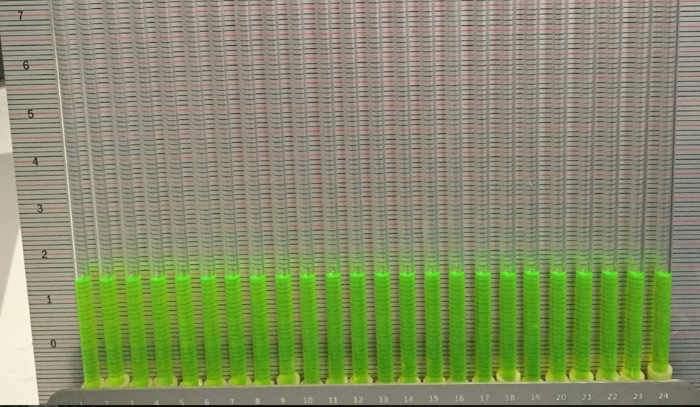交叉圆柱流:测量压力分布和估计阻力系数
Overview
资料来源:郭大卫,工程、技术和航空学院(CETA),南新罕布什尔大学(SNHU),曼彻斯特,新罕布什尔州
交叉圆柱流的压力分布和阻力估计已经研究了几个世纪。根据理想的电位流动理论,圆柱体周围的压力分布是垂直对称的。气缸上下游的压力分布也是对称的,从而产生零净阻力。然而,实验结果产生的流量模式、压力分布和阻力系数大不相同。这是因为理想无旋转电位理论假定无旋转流动,这意味着在确定流动模式时不考虑或考虑粘度。这与现实有很大不同。
在本演示中,使用风洞生成指定的空速,并使用具有 24 个压力端口的气缸来收集压力分布数据。本演示说明了围绕圆形圆柱体流动的真实流体的压力如何不同于基于理想化流体电位流动的预测结果。拖动系数也将被估计,并比较预测值。
Procedure
1. 测量气缸周围的压力分布
- 拆下风洞测试部分的顶盖,在转盘上安装一个干净的铝制气缸(d = 4 in),并安装 24 个内置端口(图 3)。安装气缸,使端口零朝向上游 (图 4a)。
- 更换顶盖,并将标有 0 - 23 的 24 个压力管连接到压力计面板上的相应端口。压力计面板应加注彩色油,但在水中标明。
- 打开风洞,以60英里/小时的速度运行。通过读取压力计记录所有24个压力测量。在此空速下,雷诺数为 1.78 x 105。预期流模式如图2d所示。
- 记录完所有测量值后,关闭风洞,并垂直在气缸上胶带两根串(d = 1 mm),以创建扰动的气缸。在端口 3 和 4 之间磁带一个字符串(± = 52.5°),在端口 20 和 21 之间磁带另一个字符串(± = 307.5°
Results
清洁和扰动气缸的实验结果分别显示在表1和表2中。数据可以绘制在压力系数的图形中,Cp与角位置 ,α,用于理想和真实流动,如图6所示。

















